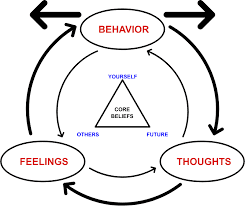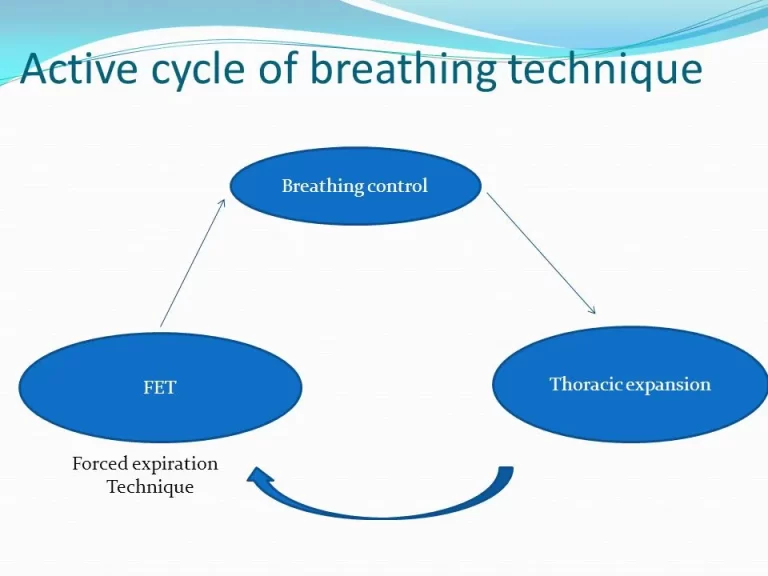Cognitive Behavioral Therapy (CBT)
What Is Cognitive Behavioral Therapy (CBT)?
Cognitive Behavioral Therapy (CBT) is a widely used psychotherapeutic approach aimed at helping individuals identify and change negative thought patterns and behaviors.
A form of psychotherapy known as cognitive behavioral therapy (CBT) teaches patients how to recognize and alter unhelpful or distressing thought patterns that negatively impact their emotions and behavior.
Cognitive behavioral therapy combines cognitive and behavioral therapies by identifying harmful mental, emotional, or behavioral patterns and replacing them with suitable ones.
Merriam-Webster defines cognitive behavioral treatment.
The goal of cognitive behavioral therapy is to alter the automatic negative beliefs that exacerbate anxiety, sadness, and other emotional problems. These spontaneous negative thoughts can have a negative effect on our mood.
Bad thoughts are recognized, contested, and replaced with more realistic, objective thoughts through cognitive behavioral therapy (CBT).
History
Early roots
Maintaining a faith or belief system generally has a favorable impact on mental health, according to the majority of research. To address mental health difficulties, religious entities have proactively founded charities, including the Samaritans.
With the rise in popularity of studies examining the effects of religious belief and practices, cognitive behavioral therapy, or CBT, has come under investigation. A large number of randomized controlled experiments have investigated the relationship between CBT and various theological frameworks, such as Christianity, Taoism, Judaism, and more.
Islam
Al-Ghazali
Islamic psychology has its roots in the Sufi tradition and dates back to the 11th century when Al Ghazali had a significant influence. Al Ghazali believed that the heart, spirit, soul, and intellect are the four essential components of the person. These elements correspond to the domains of Cognitive Behavioral Therapy (CBT), including emotions, behaviors, thoughts, and reflective ability.
Buddhism
The development of numerous new types of Cognitive Behavioral Therapy (CBT), such as Dialectical Behavior Therapy, Mindfulness-Based Cognitive Therapy, Spirituality-Based CBT, and compassion-focused therapy has been greatly influenced by Buddhist principles.
Philosophies
Many ancient philosophical systems, most notably Stoicism, have been found to have precursors to some of the core concepts of cognitive behavioral therapy. The idea that logic may be utilized by stoic philosophers, especially Epictetus, to recognize and reject incorrect beliefs that give rise to negative emotions has inspired contemporary cognitive-behavioral therapists’ ability to recognize cognitive distortions that cause anxiety and depression.
As stated in Aaron T. Beck’s original depression treatment manual, “The Stoic philosophers are the philosophical forebears of cognitive therapy.”Albert Ellis’s reading of Epictetus is another instance of the Stoic influence on cognitive theorists. John Stuart Mill was a significant philosopher who helped shape CBT by developing Associationism, which was the forerunner of behavioral theory and classical conditioning.
Cognitive behavioral therapy types
A variety of methods and strategies that target our feelings, ideas, and actions are included in CBT. These can include structured psychotherapies and self-help methods. The following are a few particular therapeutic modalities that use cognitive behavioral therapy:
Cognitive therapy
The main goals of cognitive therapy are to recognize and alter incorrect or distorted thought patterns, emotional reactions, and behavioral patterns.
Dialectical behavior therapy (DBT)
With the use of therapeutic techniques including emotional control and mindfulness, dialectical behavior therapy (DBT) targets harmful or unsettling beliefs and actions.
Multimodal therapy
Multimodal therapy states that treatment for psychological issues should focus on seven different but linked modalities: behavior, affect, sensation, pictures, cognition, interpersonal factors, and drug/biological concerns.
Rational emotive behavior therapy (REBT)
In rational emotive behavior therapy (REBT), illogical beliefs are first identified, then vigorously contested, and ultimately, the ability to identify and modify thought patterns is acquired.
Though they all employ different strategies, cognitive behavioral therapies all aim to treat the underlying thought processes that give rise to psychological suffering.
Cognitive Behavioral Therapy Techniques
Beyond only recognizing thought patterns, CBT aims to do more. To assist people in breaking these patterns, it employs a variety of techniques. These are but a handful of the methods employed in cognitive behavioral therapy.
Recognizing Negative Ideas
It is important to identify the thoughts, feelings, and situations that give rise to improper behavior. But this can be a challenging process, particularly for those who find it difficult to reflect. However, taking the time to recognize these thoughts can also result in self-awareness and offer perspectives that are critical to the therapeutic process.
Putting New Skills into Practice
People who receive cognitive behavioral therapy often acquire new skills that they can use in their daily lives. To be ready for the possibility of a recurrence a person with a substance use problem should, for example, practice coping skills and social situation avoidance or management techniques.
Goal-Setting
Setting objectives can be a vital stage in the healing process from mental illness and can assist you in making changes to improve your life and health. A cognitive behavioral therapy specialist can help you improve and grow in your goal-setting skills.
This can involve teaching people how to identify goals or the difference between short- and long-term goals. Helping you set SMART goals—specific, measurable, achievable, relevant, and time-bound—that stress the process over the final result is another way it can help.
Problem-Solving
Gaining problem-solving abilities during cognitive behavioral therapy will assist you in recognizing and resolving issues of all sizes that may result from life’s challenges. Additionally, it can lessen the detrimental effects of both physical and mental sickness.
Problem-solving in CBT usually involves the following five steps:
- Determine the issue
- Make a list of all the possible fixes.
- Analyze the advantages and disadvantages of each possible fix.
- Select a course of action to take.
- Put the solution into practice.
Self-Observation
Record work, or self-monitoring, is an essential cognitive behavioral therapy technique. It comprises keeping a journal of your events, symptoms, and behaviors throughout time, which you then submit to your therapist. Your therapist can get the information they need to give you the best care possible by having you self-monitor.
For someone with an eating problem, self-monitoring could involve documenting eating behaviors as well as any feelings or thoughts that come with a meal or snack.
What Cognitive Behavioral Therapy Can Help With
As a short-term intervention, cognitive behavioral therapy can teach patients how to pay attention to their current ideas and beliefs.
CBT is utilized to address a variety of illnesses, such as:
- Dependency
- Anger problems
- Fear
- Manic episodes
- Depression
- eating disorders
- Attacks of panic
- diseases of the personality
- Fears
In addition to mental health difficulties, cognitive behavioral therapy has been demonstrated to help people deal with the following conditions:
- Serious illnesses or persistent Pain
- Divorces or separations
- Sadness or bereavement
- Sleeplessness 10 Low self-worth
- Relationship issues
- control of stress
Benefits of Cognitive Behavioral Therapy
The basic principle of CBT is that feelings and ideas affect behavior. For example, someone who gets involved in airline incidents such as runway accidents, plane disasters, and other incidents may stay away from flying. Cognitive behavioral therapy aims to teach patients that although they are powerless over everything in their environment, they are in charge of how they perceive and respond to it.
CBT is well-known for offering the following main advantages:
- By making you aware of the unfavorable and frequently irrational beliefs that depress your emotions and moods, it aids in the development of healthy thought habits.
- Improvements can frequently be observed in five to twenty sessions, making it an efficient option for short-term therapy.
- For a broad range of maladaptive behaviors, it works well.
- It is less costly than certain other types of therapy.
- It works well for both in-person and online therapy.
- Those who don’t need psychotropic medication can utilize it.
Effectiveness of Cognitive Behavioral Therapy
The 1960s saw the development of cognitive behavioral therapy (CBT), as psychiatrist Aaron Beck noticed that certain thought patterns were associated with emotional problems. Beck called these “automatic negative thoughts” and developed the cognitive therapy approach.
The cognitive method examines how thoughts and feelings influence behavior, in contrast to previous behavior therapies that had virtually solely focused on associations, rewards, and punishments to improve behavior.
Nowadays, one of the most researched types of therapy is cognitive behavioral therapy. Numerous mental illnesses, including anxiety, depression, eating disorders, insomnia, panic disorder, obsessive-compulsive disorder, post-traumatic stress disorder, and drug use disorder, have been demonstrated to respond well to it.
According to research, the most effective evidence-based treatment for eating disorders is cognitive behavioral therapy. Cognitive behavioral therapy (CBT) has demonstrated efficacy in treating insomnia and other medical conditions that cause sleep disturbances, such as pain or mood disorders like depression.
Studies have shown that cognitive behavioral therapy is effective in treating young patients’ symptoms of depression and anxiety. In 2018, a meta-analysis including 41 studies showed the efficacy of cognitive-behavioral treatment (CBT) in reducing anxiety symptoms and conditions that are linked to it, including post-traumatic stress disorder and obsessive-compulsive disorder.
Clinical research supports the use of cognitive behavioral therapy in the treatment of substance use disorders. It helps patients avoid triggers, improve self-control, and create solutions for common stressors. Because CBT focuses on extremely defined goals and results can be quantified fairly simply, it is one of the most investigated types of therapy.
According to Verywell Mind’s Cost of Therapy Survey, which aimed to learn more about how Americans handle the financial limitations involved with therapy, most Americans believe that therapy has many benefits.
- Eighty percent believe therapy is worth the cost.
- Of those who receive therapy, 91% are satisfied with the quality of care.
- 84% are happy with their progress toward their goals related to mental health.
Things to Consider With Cognitive Behavioral Therapy
People may experience several difficulties when undergoing cognitive behavioral treatment.
Here are a few things to consider.
Change Can Be Difficult
First, some patients say that even if they understand that certain of their beliefs are unhealthy or illogical, changing them just requires awareness of them.
CBT Is Very Structured
Unlike psychoanalytic psychotherapy and other approaches, cognitive behavioral therapy does not place as much emphasis on underlying, unconscious resistance to change. Gaudiano BA. The successes and difficulties of cognitive-behavioral therapy. Rather, it tends to be more structured, so those who struggle with structure might not find it appropriate.
You Must Be Willing to Change
You must be prepared and willing to invest time and energy in critically examining your thoughts and feelings for cognitive behavioral therapy to be successful. Although this self-analysis can be challenging, it’s a fantastic method to understand more about how our inner feelings influence our outer conduct.
Progress Is Often Gradual
CBT is typically a slow approach that aids in little steps toward behavior modification. For example, someone with social anxiety can start by only imagining social situations that worry them. They could then practice conversations with friends, family, and colleagues. By taking small steps toward a larger goal, the process becomes easier and the goals appear more achievable.
How Cognitive Behavioral Therapy Is Started?
For a variety of psychological conditions, cognitive behavioral therapy can be a useful therapeutic option. If you believe that you or a loved one could benefit from this type of therapy, think about taking the following actions:
- Consult your physician or search the National Association of Cognitive-Behavioral Therapists’ list of qualified therapists to locate an approved practitioner in your area. Another option is to search for “cognitive behavioral therapy near me” to identify nearby therapists with expertise in this field of treatment.
- Think about your personal preferences, such as if you would benefit more from online or in-person therapy.
- Find out if cognitive behavioral therapy is covered by your health insurance and, if so, how many sessions are covered annually by getting in touch with them.
- Create an appointment on your calendar with the therapist of your choice, being sure to mark it so you don’t forget or unintentionally book something else at that time.
- Arrive at your first session with a cheerful outlook and an open mind. Prepare yourself to start recognizing the ideas and actions that might be preventing you from moving forward and make a commitment to mastering the techniques that will help you do so.
What to Expect With Cognitive Behavioral Therapy
If cognitive behavioral therapy is something you have never experienced before, you may be nervous or afraid of what is ahead. The initial session starts pretty much like your first visit with any new medical professional.
In addition to your symptoms, be prepared to talk about your past, including your family, schooling, job experience, past romantic and personal relationships, current place of residence, and the circumstances that led you to look for treatment.
The therapist can assist you in being more conscious of the ideas and beliefs you hold that are unhelpful or unrealistic after they have a greater understanding of your identity, the difficulties you are facing, and your objectives for cognitive behavioral therapy. After that, techniques are put into place to assist you in creating better thought and behavior habits.
In subsequent meetings, you will talk about the methods that are and aren’t working for you and adjust the ones that are. In between sessions, your therapist could also recommend self-management practices for cognitive behavioral therapy, such as journaling to recognize unfavorable thoughts or learning new techniques to manage your anxiety.
Conclusion
In summary, cognitive behavioral therapy, or CBT, is a popular and scientifically supported psychotherapy technique that aims to recognize and alter unfavorable thought and behavior patterns. It stands out for being systematic and goal-oriented, usually necessitating working together between the therapist and the patient to solve specific issues or challenges.
Numerous mental health issues, such as anxiety disorders, depression, PTSD, and obsessive-compulsive disorder (OCD), have been demonstrated to respond well to cognitive behavioral therapy (CBT). It is a beneficial tool for promoting resistance and long-term psychological well-being because of its focus on teaching practical skills and symptom management approaches. All things considered, CBT provides a proactive and empowered therapeutic strategy that aids in coping mechanism development and long-lasting, beneficial life adjustments.
FAQ
What does cognitive behavioral therapy do?
The goal of cognitive behavioral therapy (CBT) is to show patients that they can manage their ideas, feelings, and behaviors. CBT supports you in using useful techniques to alter or adjust your behavior as well as challenging and overcoming automatic beliefs.
What is an example of a CBT?
Which situations require cognitive behavioral therapy? Some CBT strategies that could be used are as follows: exposing oneself to anxiety-inducing circumstances, such as entering a busy public area. keeping a journal in which you write down your ideas and feelings about them as they occur.
Can I do CBT on my own?
Because CBT is a highly structured therapeutic approach, it is well suited to online therapy and self-help. The goal of CBT is to teach you self-management skills so you can stop depending on your therapist. The idea is to become your therapist and render your therapist unnecessary.
What are the 5 steps of CBT?
Five Simple Steps to Apply Cognitive Behavioral Therapy (CBT) to Change the Way You Think
First, create a list.
Step 2: Write down any ideas that don’t work.
Step 3: Construct Substitute Ideas.
Step 4: Go through your list frequently.
Step 5: Take Notes and Change.
How can I do CBT at home?
Five Steps For At-Home CBT
Use statements that you have created for yourself to counteract any negative thoughts.
Determine the issue and consider potential solutions.
Seek out fresh opportunities for optimistic thinking.
Consider your day’s highlights as you come to an end.
Accept setbacks as a necessary component of a happy existence.
References
- MSEd, K. C. (2023, November 2). What Is Cognitive Behavioral Therapy (CBT)? Verywell Mind. https://www.verywellmind.com/what-is-cognitive-behavior-therapy
- Cognitive behavioral therapy. (2024, March 13). Wikipedia. https://en.wikipedia.org/wiki/Cognitive_behavioral_therapy







22 Comments